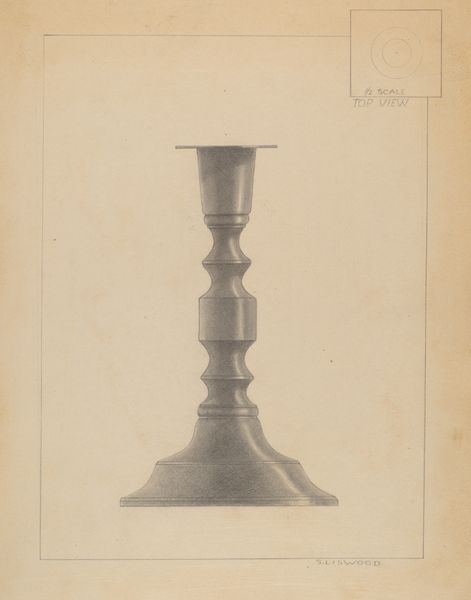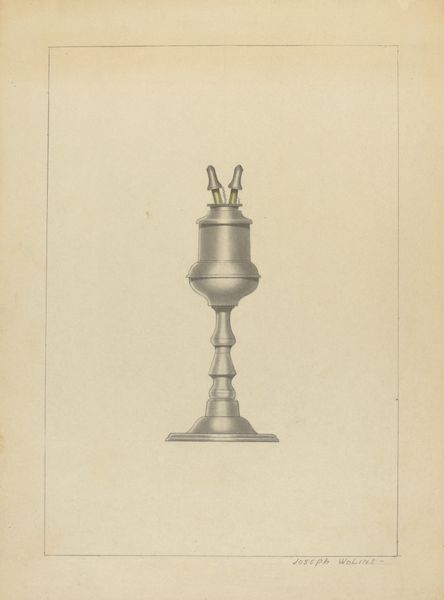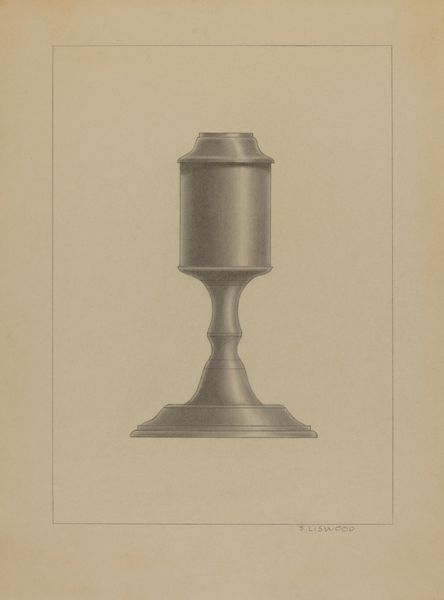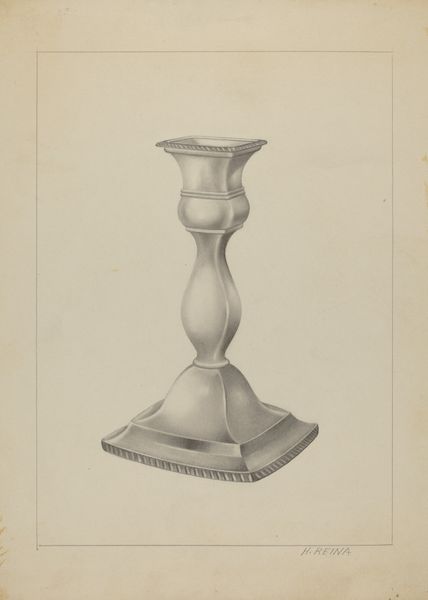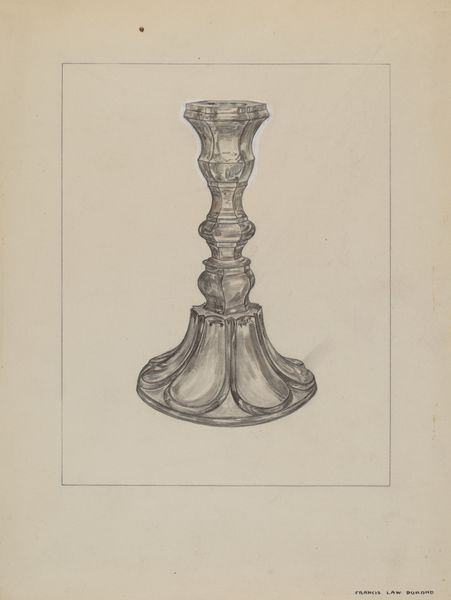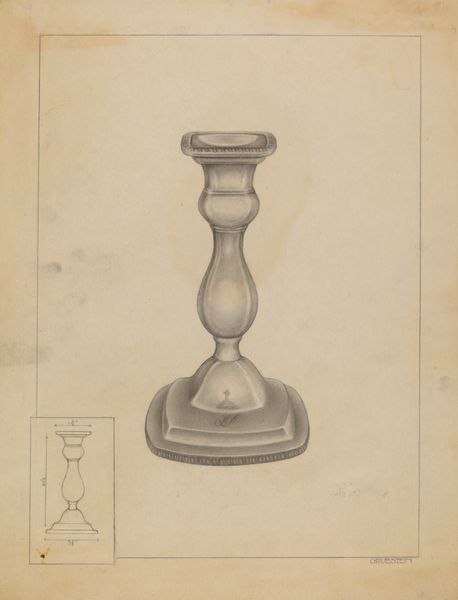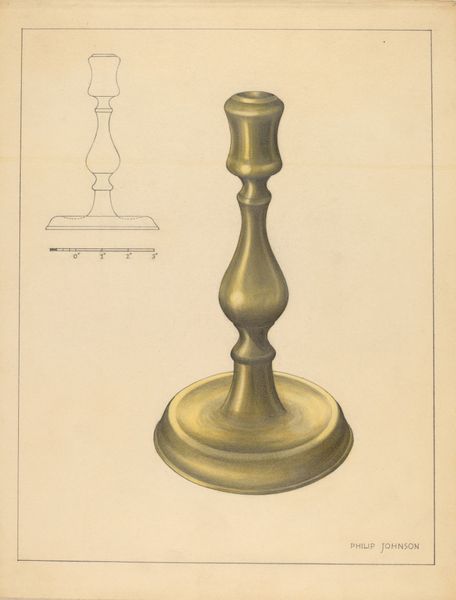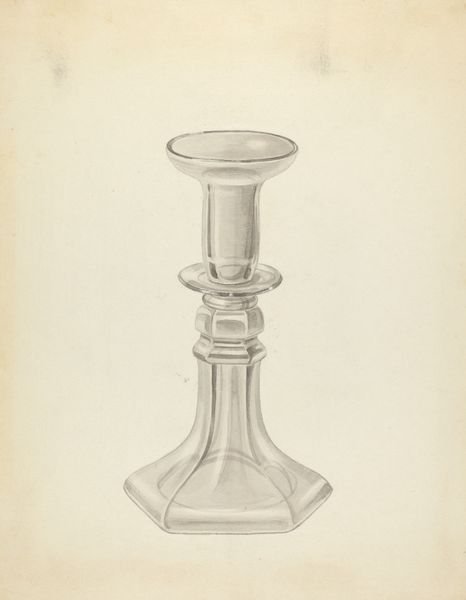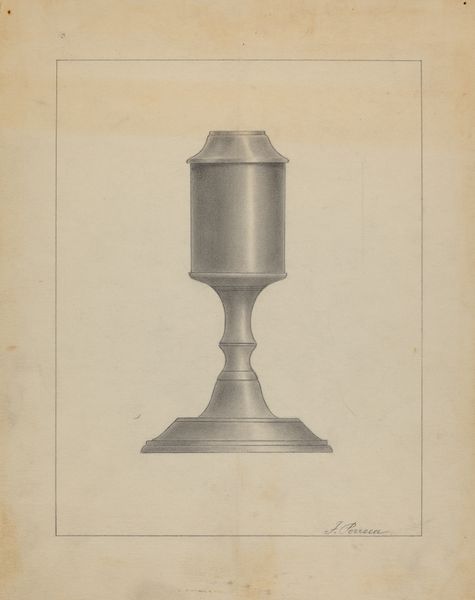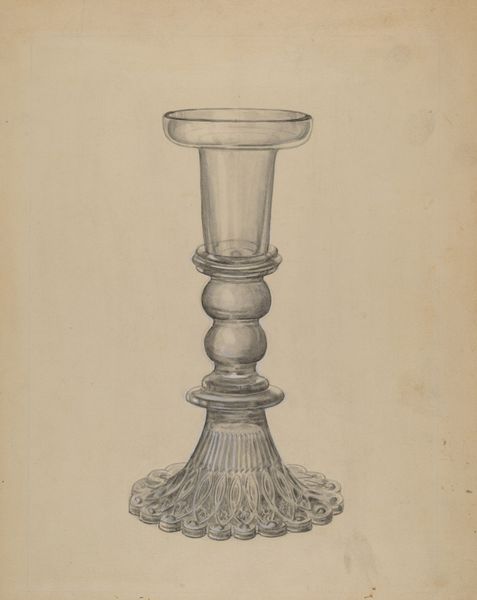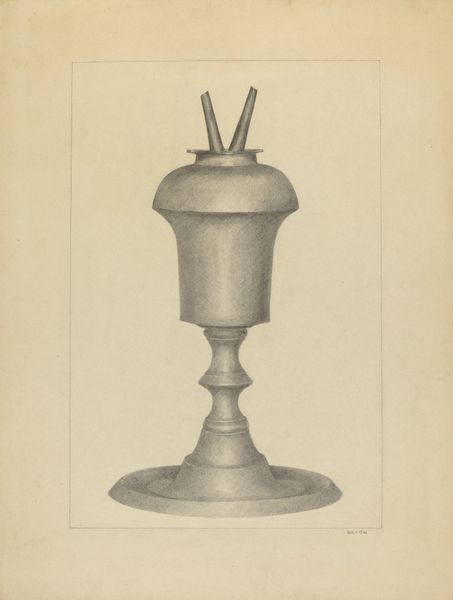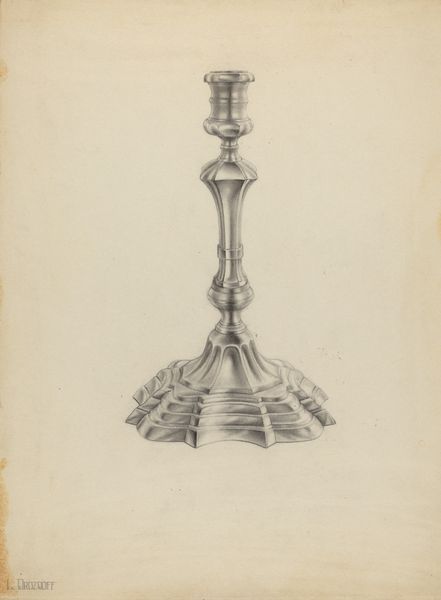
drawing, pencil
#
drawing
#
pencil drawing
#
geometric
#
pencil
Dimensions: overall: 28.8 x 23 cm (11 5/16 x 9 1/16 in.) Original IAD Object: 6 1/2" high; 3 1/2" wide
Copyright: National Gallery of Art: CC0 1.0
Curator: This is Joseph Wolins' "Candlestick," drawn around 1936 using pencil. The quiet simplicity of this drawing, the lone candlestick rendered with such care… it almost feels melancholic, doesn’t it? Editor: Yes, there is a stillness about it. It seems very detailed but almost...empty, like there’s a story missing. How do you interpret this work, given its time? Curator: I think we have to consider the context of the Great Depression. An object like a candlestick, rendered with such precision, becomes more than just a household item. It's a symbol, perhaps, of endurance, a quiet flame persisting in a time of great economic and social upheaval. Who, primarily, used such things, and who had access to resources that enabled this period of production? Editor: That makes me think about domesticity and gender, too. Was it typical for male artists to depict such scenes of domestic life in this period? Curator: Exactly. And consider Wolins' position. How did his identity—likely as a man—intersect with these economic hardships, and how might that influence his artistic choices? We can read into that the stability offered, particularly to men of the period. Editor: That's fascinating. I hadn't thought about the social implications of something as simple as a candlestick. Curator: Art allows us to connect personal objects to larger societal struggles, illuminating unseen power dynamics and hidden stories. Editor: I see the candlestick now as a relic, more poignant. Thanks, it definitely makes you think beyond the surface. Curator: Indeed, a deeper analysis always reveals the intertwined threads of personal experience and political reality.
Comments
No comments
Be the first to comment and join the conversation on the ultimate creative platform.
